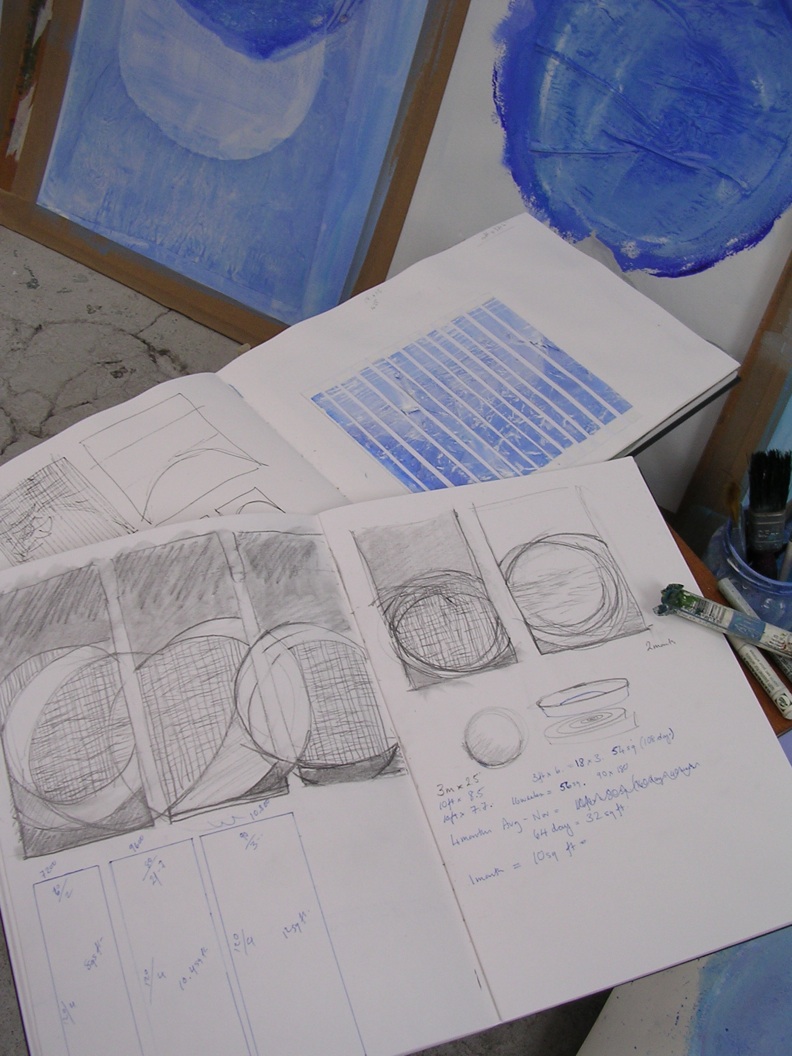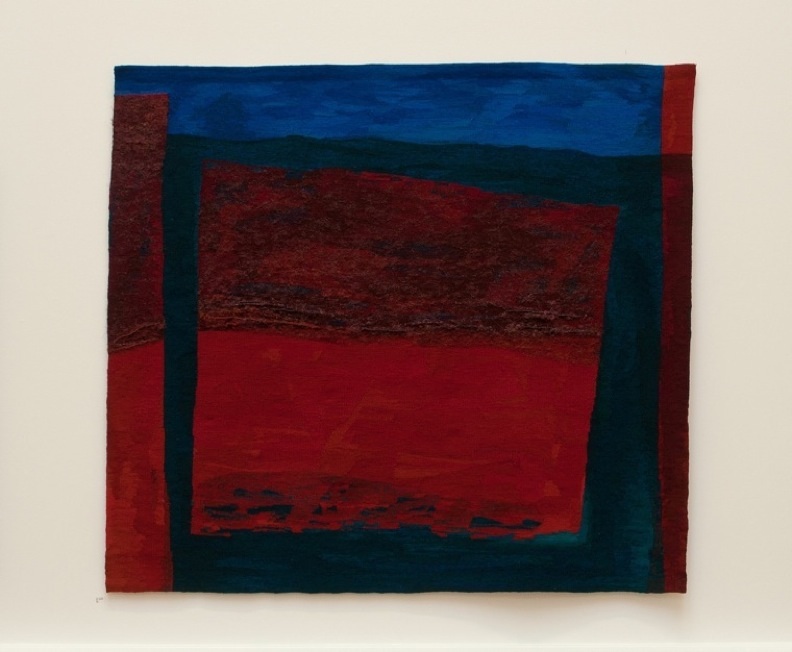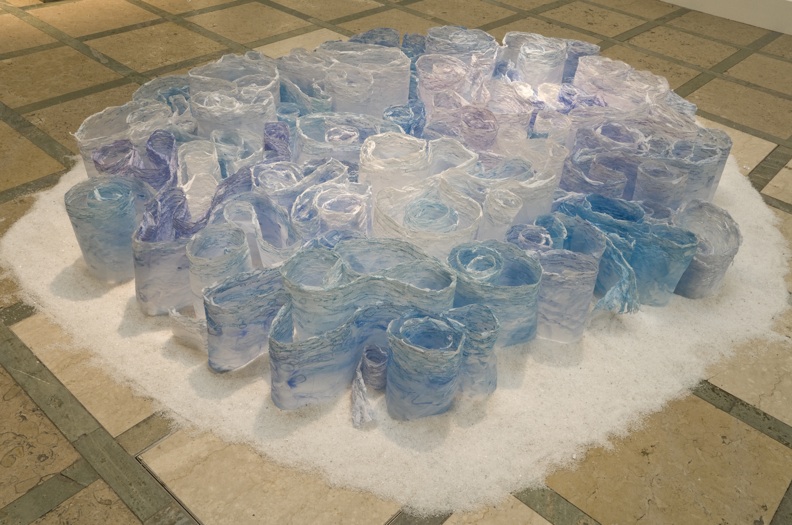In my own words
To weave or not to weave this is the big question?
As an artist my aim is to great something that comes from my own experiences and speaks with my voice. It must reflect my interests and passions and hopefully stir some emotions or thoughts in the viewer. It is all about personal expression.
In the process of developing ideas for my tapestry I will produce many drawings and painting to help me evolve my ideas and designs. From the smallest painting a large tapestry can evolve. It is the quality of the marks, surface and composition that will determine whether the tapestry will be 6 inches or 6 feet. From 10 or more little paintings only one or two will demand to be recreated in tapestry.
So why do I choose to weave rather than develop my ideas as paintings, prints or sculptures.
I weave because I have an emotional attachment to the materials. I delight in the different qualities of yarn. The softness and depth you get when weaving with wool or the crisp firm surface of woven linen. It is about surface quality and handle of materials. Then there is colour; the combining of many coloured yarns is a magical process.
There is also something in the methodical process of weaving, building the tapestry. I am making an object and not just an image. Tapestry has physicality, a presence that I cannot achieve in my paintings.
Like many I did not set out to be a tapestry weaver. I went to Edinburgh College of Art in the early 1980s with the intention of studying Fashion. But after 5 days in the tapestry department I was converted.
The ethos of the tapestry department was that we must first develop as artists, finding our own creative voice. Evolving ideas independently of the medium. Images should not be technique led. This meant that we did not always have to translate our ideas in to woven tapestry. We were encouraged to explore other textile and fibre materials and processes, to discover the best way to realise our ideas. We experimented with paper and paper making, flees and felt making and many other materials and techniques. The exploration of materials and techniques was underpinned by research into your chosen subject, through reading and study to drawing and mark making.
My chosen subject was the sea, a subject that has inspired me since my 3rd year at college (1983). Growing up by Newhaven Harbour in Edinburgh my father introduced me to sailing and messing about in boats. I fell in love with the sea and over the last 28 years the sea has continued to inspire me. From personal experience of sailing to harbours walls and crumbling piers, tidal flows and fisherman’s tails, there is an never ending supply of imagery.
The imagery I create is semi abstract. (“Tide Line” and “Harbour Wall”) or 3 dimensional and sculptural (“Uncharted Waters”) I am not trying to reproduce images of the sea but to express my emotional attachment to it. With the sea nothing stands still or remains the same, this ebb and flow or the storm and calm can also be seen as a metaphor to our lives, and therefore has a deeper resonance and meaning.
The meeting of ideas and materials is an important part of my work and the one cannot exist with out the other. For me the research and development of an idea will run parallel to the exploration of materials and techniques. After several research trips to Japan a third element of space also became important in my work. I began to think and design work with a particular space or environment in mind, although the finished works did not always end up in my chosen space. The space around the work or the environment in which it was places became important in the evolution of the idea.
Although I consider my self to be a tapestry artist I am inspired by other textile materials and techniques. Teaching Stitched Texttiles on the Edinburgh University, Life Long Learning Program (Edinburgh College of Art) introduced me to a whole new textile language, and recent residency in Norway aloud me the time and space to experiment with these new found materials and techniques. Fascinated by the qualities of tracing paper and inspired by the ebb and flow of the fjords outside my Stavanger studio window I began to experiment with these materials, drawing with stitch and creating new sculptural works (“Ocean Papers” & “Unlocking the Sea”). As I worked the paper with stitch, paint and water it began to fall apart, tear and desintiragate. This pile of stitched torn paper had a beauty all of its own and provided me with a whole new creative language. It was not what I intended or expected but I found that these ribbons of stitch paper I could bring back in to my weaving. The creative journey always brings me back to Tapestry.
For my continued development as a creative artist it is important for me to be continually looking and searching for new ideas and ways to experiment with tapestry and textiles. Form manipulating the warp and weft to create 3 dimentional tapestry or in bringing together unusual combinations of materials. This keeps my work fresh and challenges our Idea of what tapestry is or can be, an art form that is relevant and has a voice in the 21st century.
Fiona Hutchison, tutor and artist works from here studio in Edinburgh



